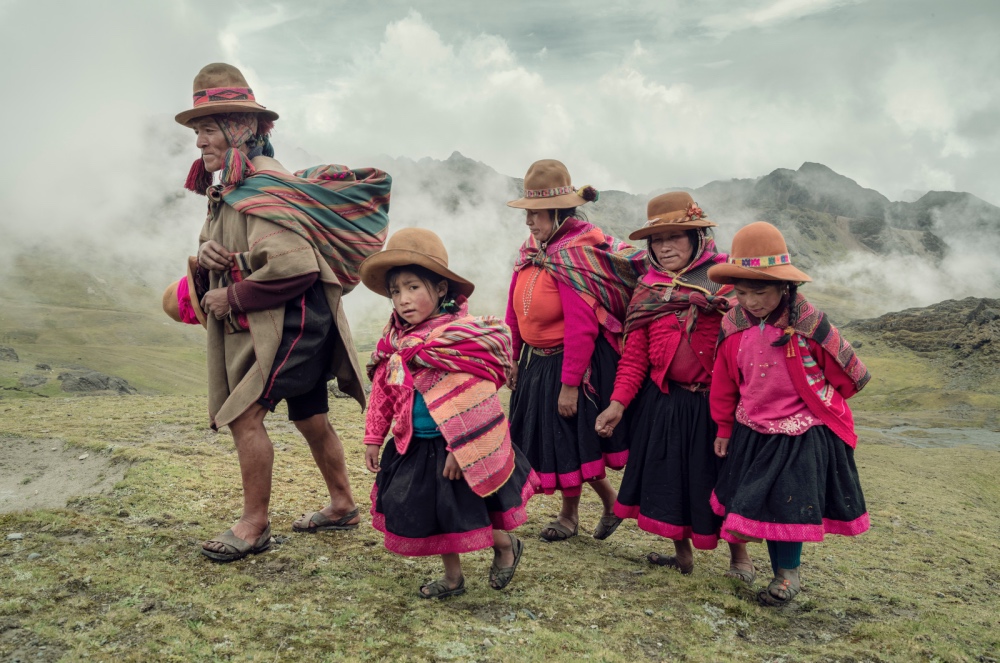London, UK
Thomson Reuters Foundation
From a group of pink-clad women climbing the Peruvian Andes to men in feathered headgear in canoes on a Papua New Guinea lake, an artist is using vanishing portraits of endangered tribes to spur world leaders into action.
‘Blink. And they’re gone’, a film by British artist Jimmy Nelson, challenges business and political leaders at this week’s annual World Economic Forum in Switzerland’s Davos to view a series of portraits of indigenous communities without blinking.

Q’ero tribe in the Andes, Peru, 2018. PICTURE: Handout photo via Jimmy Nelson
If they do, the two-minute film – which uses augmented reality to monitor viewers’ eye movements – stops playing, highlighting urgent threats to indigenous cultures such as the Q’ero Indians in Peru and Siberia’s Nenets tribe.
“We can take 1,000 pictures of melting ice caps but unless we understand the people who are most affected by this, entire cultures and communities could vanish,” the 52-year-old told the Thomson Reuters Foundation in a phone interview.
Up to 2.5 billion people depend on Indigenous and community lands, which make up more than half of all land globally, but Indigenous people legally own just 10 per cent, according to the Washington, DC-based Rights and Resources Initiative.
That land and those who live on it face grave threats including forest fires exacerbated by climate change and disputes over access to natural resources like minerals.
At least 108 people were killed trying to protect their land from encroaching industries in 23 countries from January to November 2019 – compared to 91 killings recorded in the same period last year, according to advocacy group PAN Asia Pacific.
Yet Indigenous communities have an “extraordinary wealth and knowledge” that can be used to protect nature like preventing wildfires in Australia, said Nelson, calling them “the world’s last superheroes”.
Nelson, whose work has been criticised by some charities for romanticised portrayals of Indigenous communities acknowledged his art was “very stylised” – but said this was to shine a “glorified, proud light on indigenous cultures”.
Among other scenes, the film shows bow-wielding men on a beach scanning the horizon, while bare-chested women can be seen standing atop large rocks at dusk.
The former war photographer said he hoped to convince governments that “cherishing the land they [tribes] live on brings more value in the long term than mineral or other exploitation in the short term”.
Indigenous people in August said that a United Nations report on climate change had for the first time recognised their land rights as important for curbing global warming.
Victoria Tauli-Corpuz, the UN special rapporteur on the rights of indigenous peoples, said that “Indigenous peoples and local communities are the best guardians of the lands and forests we all rely on for a stable climate.”
“Ending the cycle of violence is therefore not only a human rights imperative, but is also critical for combating the climate crisis and biodiversity erosion,” she said in emailed comments.






